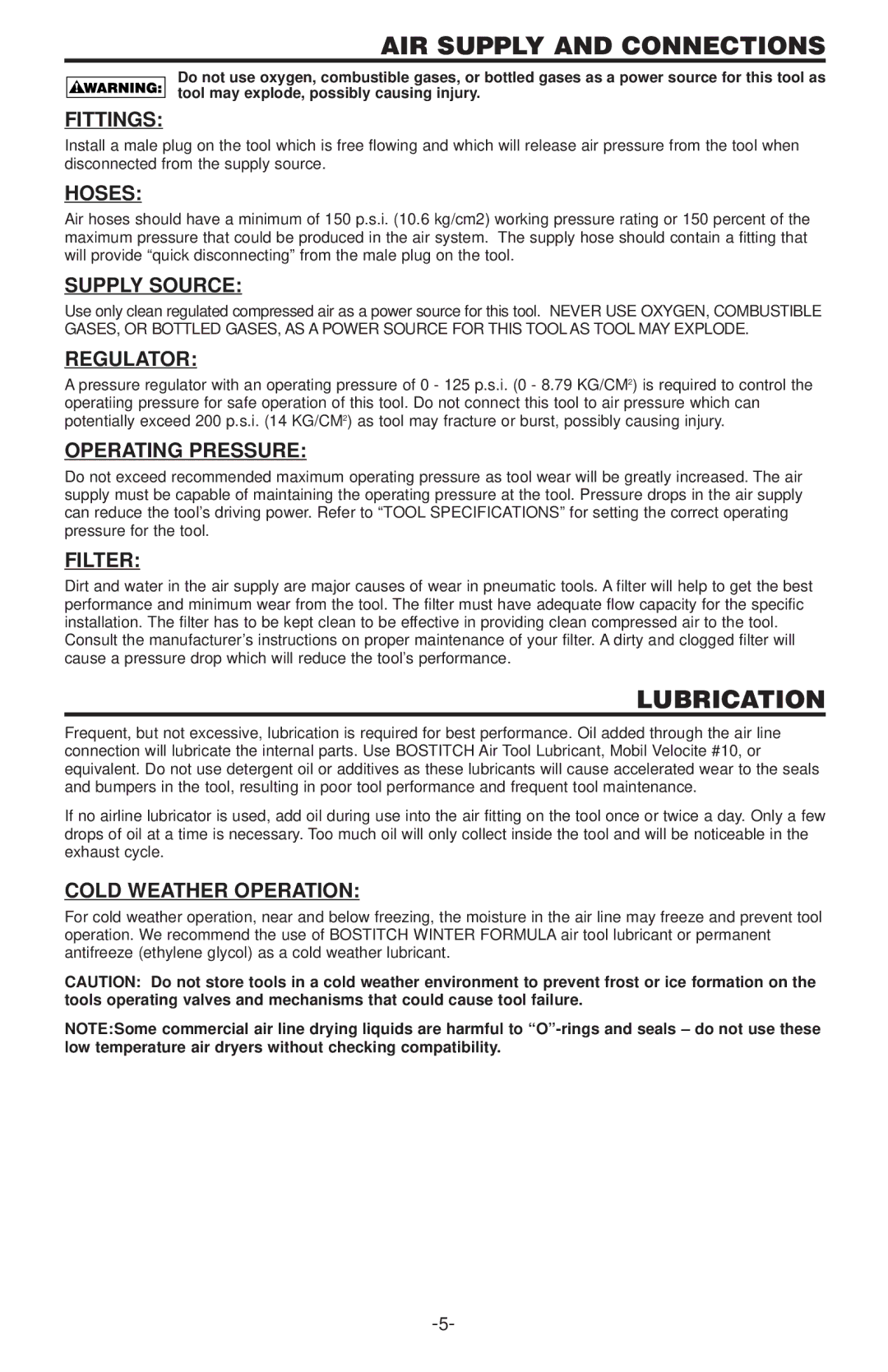400 SERIES, 500 SERIES specifications
The Bostitch 500 Series and 400 Series are two lines of pneumatic nailers and staplers renowned for their robust performance and innovative features in the construction and woodworking industries. Designed to enhance efficiency and precision, these tools are ideal for both professional and DIY applications.The Bostitch 500 Series is known for its versatile functionality and lightweight construction. It includes a range of models that cater to framing, roofing, and finishing tasks. One of its standout features is the integrated tool-free depth adjustment that allows users to easily set the desired nail depth without the need for additional tools. This ensures consistent results across various materials, such as softwood, hardwood, and engineered wood.
Another significant technology present in the 500 Series is the oil-free design, which reduces maintenance time and the risk of oil stains on work surfaces. Additionally, these nailers are equipped with a selectable trigger system that allows users to switch between sequential and bump firing modes. This flexibility enables operators to adapt to different work requirements efficiently.
The 400 Series, on the other hand, is specifically designed for heavy-duty applications, making it perfect for professional contractors. These models feature a more robust build quality and enhanced durability, capable of handling tougher jobs with ease. The 400 Series also boasts a high-capacity magazine that minimizes downtime for reloading, allowing for continuous operation on larger projects.
In terms of technological advancements, the 400 Series incorporates an advanced anti-dry fire mechanism that prevents the tool from firing when there are insufficient fasteners in the magazine. This feature not only protects the work surface but also prolongs the lifespan of the tool. Additionally, the lightweight design ensures that users can maneuver the tool comfortably, reducing fatigue during prolonged use.
Both series feature Bostitch’s signature design elements, including ergonomic handles for better grip and comfort, and a compact profile for easy access in tight spaces. The durable construction of each model ensures that they can withstand the rigors of daily use on the job site.
In summary, the Bostitch 500 Series and 400 Series offer a blend of cutting-edge technology, user-friendly features, and durable construction, making them essential tools for professionals and enthusiasts alike. With their efficient performance and innovative designs, these nailers and staplers continue to set the standard in the industry.

